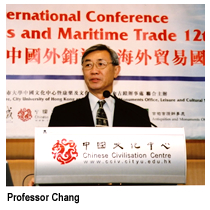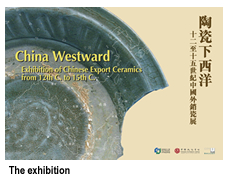Rediscovering China's porcelain trade
Regina Lau
Preceding the Conference was an exhibition of some 200 relics displayed in the CityU Gallery in January this year, offering viewers a rare glimpse into porcelain as a maritime export and a cultural conduit between
The
CCIV conducted the China Westward Project with CityU’s Department of Physics and Materials Science (AP), mainlandFocus on Quanzhou
Professor Cheng Pei-kai, CCIV Director and Principal Investigator of the China Westward Project, introduced the background of the study. Porcelain, he said, is a durable and crucial resource for reconstructing
Another researcher, Professor Peter Yu of the AP, illustrated Thermoluminescence (TLD) and X-ray Fluorescence (XRF) used for porcelain dating and testing. “Using heat, light and x-rays establishes a more scientific basis of judgment than the traditional approach based on shape, color and glaze,” he said. Using TLD, AP’s Ancient Ceramics Scientific Authentication Centre led by Dr Leung Po-lau, Adjunct Professor, also one of the Project researchers, has authenticated more than 700 ceramic shards for local dealers, collectors and archaeologists since its establishment in 1991.
The opening ceremony also featured a case study of Chinese ceramics excavated from Angkor Thom,
Also invited to kick off the two-day conference was Mr Edward Ho, Chairman of the Antiquities Advisory Board. “Globalization has become a way of life,” he said. “The world has always been connected through international trade and maritime trade was an important forerunner.” He reminded the audience not to overlook the importance of



